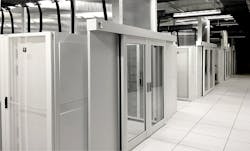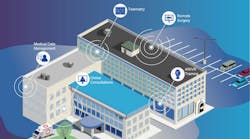In this week’s Voices of the Industry, Ashish Moondra, Senior Product Manager, Power, Electronics & Software at Chatsworth Products, discusses three key DCIM goals to gauge deployment success.
In my previous article, “The Cabinet is Critical to Managing Edge Compute Sites for IoT,” I discussed three key elements for a successful cabinet ecosystem—one being the deployment of a centralized data center infrastructure management (DCIM) solution.
Ashish Moondra, Senior Product Manager, Power, Electronics & Software, Chatsworth Products
Although DCIM has been widely used in the past several years by many organizations across the entire spectrum, surprisingly, very few consider their deployments to be successful.
As we look deeper into the reasons for this generalized dissatisfaction, the one that stands out is the fact that organizations have tried investing in highly complex solutions that have promised to solve every single problem for data center operators. By trying to monitor, report and solve every issue, data center organizations have spread themselves too thin, causing operators to become overwhelmed and frustrated.
Divide-and-Conquer Approach
Instead, a modular approach that solves one issue at a time leads to better results. The key to this approach is to clearly understand the different problems that a DCIM solution is designed to resolve, and then focus on each issue individually.
[clickToTweet tweet=”Ashish Moondra – data center organizations have spread themselves too thin. ” quote=”Ashish Moondra – data center organizations have spread themselves too thin. “]
Here are three important goals you should have in mind for a simplified and successful DCIM deployment:
Preventing downtime
This involves constant monitoring of all critical infrastructure through polling of equipment, setting threshold limits and built-in alerts that allows data center operators to react to issues before they impact users and services. Primary considerations for achieving this are to invest in hardware that can be monitored remotely, and ensure that the software solution has the ability to support all categories, as well as manufacturers of equipment. Because it is rare that software vendors have native support for the abundance of equipment out there, having an ability to quickly create plug-ins is critical.
Improving PUE
The next recommended goal for a DCIM solution is to reduce overall energy consumption, and optimize the utilization of the deployed power and cooling equipment. This step requires strategic planning based on all trend reports that need to be generated and the appropriate actions according to information provided. Remember, the real benefit of all data comes not from just consuming it but by actually utilizing it to reach the desired results. A DCIM solution with a built-in open database heavily simplifies this step, while providing flexibility to generate any reports required.
[clickToTweet tweet=”Follow a ‘divide and conquer’ approach to DCIM deployment #datacenter” quote=”Follow a ‘divide and conquer’ approach to DCIM deployment #datacenter”]
Improving personnel productivity
While the first two goals focus primarily on improving availability, reducing operational expenditures and optimizing capital expenditure, the third goal relates to improving personnel productivity through integrated and automated workflow and asset management. Look at this as converting the DCIM tool from a monitoring solution to a complete “Enterprise Resource Planning” (ERP) solution for the data center.
This requires integration with existing processes and tools presently being used within the organization. Similar to any ERP deployments for organizations, the key to this successful transition is to partner with the DCIM vendor. Make sure you leverage the Application Program Interface (API), as well as professional services available through the DCIM vendor.
A successful DCIM deployment must look at the data center holistically, but following the “divide and conquer” mantra during the decision-making process will greatly provide users with a simplified and measurable record of success.
Ashish Moondra is the Senior Product Manager for Power, Electronics and Software at Chatsworth Products. He has over 20 years of experience developing, selling and managing rack power distribution, uninterruptible power supplies, energy storage and DCIM solutions.





